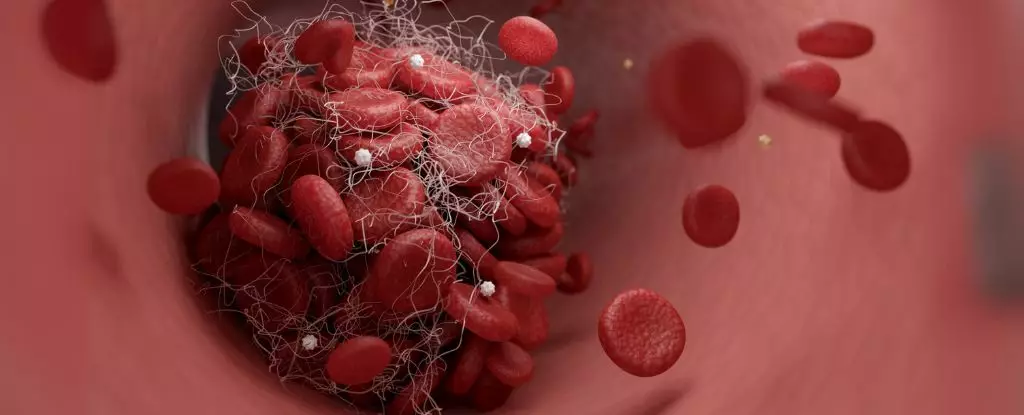Stroke is often an overlooked menace, quietly lurking in the shadows of public health discussions. As an issue that remains a leading cause of death and disability in countries like England, understanding the critical factors that contribute to its alarming prevalence is essential. While many people associate stroke risks primarily with age, the stark reality is that it is becoming increasingly common among younger adults as well. An insidious rise in risk factors such as hypertension, poor diet, and sedentary lifestyles among individuals under 55 has turned this once older person’s disease into a concerning modern-day epidemic.
The landscape of stroke is changing, challenging the prevailing misconceptions that lead to negligence in preventive measures. The role of lifestyle choices—particularly among younger generations—cannot be understated. With increased exposure to unhealthy habits, the incidence of strokes among younger adults is on the rise, making it crucial for all age groups to understand the multifaceted nature of stroke risk.
Unmasking the Risk Factors: A Closer Look
Traditionally, the narrative surrounding stroke is framed through biological vulnerabilities—age, genetic predispositions, and inherited conditions dominate this discourse. However, it’s vital to recognize that a significant number of stroke risk factors are modifiable. Conditions like high blood pressure, high cholesterol, and diabetes can largely be controlled through lifestyle changes.
More alarmingly, social determinants of health contribute to stroke risk as well. People from lower socioeconomic backgrounds often grapple with a myriad of additional challenges—limited access to healthcare, unhealthy eating habits, and higher rates of smoking and alcohol consumption. This intersection of biology and social standards creates a complex web of risk factors that disproportionately affects vulnerable populations, underscoring the need for comprehensive stroke education and prevention initiatives.
Unfortunately, many individuals remain unaware of their susceptibility to stroke. They overlook warning signs and symptoms or fail to engage in preventive measures until it’s too late. Education should be prioritized; communities need to be equipped with knowledge about the risk factors as well as actionable steps to prevent stroke.
Taking Action: Lifestyle Changes That Matter
While the aforementioned challenges may seem daunting, there is hope. A proactive approach can significantly reduce stroke risk. Here are several lifestyle modifications that have demonstrated effectiveness in stroke prevention:
1. Quit Smoking: The dangers of smoking extend far beyond respiratory issues. Smokers face a heightened risk of stroke—more than double that of non-smokers—due to negative impacts on blood flow and heart health. Quitting smoking is not just a personal gain; it’s a crucial public health goal.
2. Monitor Your Blood Pressure: Chronic hypertension is the leading culprit behind strokes. Regular monitoring and adhering to a low-sodium diet, coupled with routine physical activity, can help keep blood pressure in a safe range.
3. Manage Cholesterol Levels: High cholesterol presents a significant danger that compounds stroke risk in tandem with hypertension. A concerted effort towards a balanced diet—low in saturated fats—along with routine exercise can mitigate this risk.
4. Control Blood Sugar Levels: Elevated glucose levels can damage blood vessels over time, leading to stroke. Eating a healthy diet and engaging in regular exercise are essential strategies to maintain optimal blood sugar levels.
5. Maintain a Healthy Weight: The correlation between obesity and stroke risk is irrefutable. By achieving and sustaining a healthy weight through diet and exercise, the chances of experiencing a stroke can be significantly lowered.
6. Adopt a Mediterranean Diet: With emphasis on fruits, vegetables, whole grains, and healthy fats, the Mediterranean diet has shown promise in reducing stroke risk. This approach not only supports metabolics but fosters heart health.
7. Prioritize Quality Sleep: Quality rest is paramount; inadequate sleep can elevate blood pressure levels. Strive for seven to nine hours of quality sleep to support overall health and stroke prevention.
8. Stay Active: Regular exercise is a powerful preventive measure—it improves cardiovascular health and reduces the risk of stroke. The NHS recommends a minimum of 150 minutes of moderate aerobic activity weekly.
The Power of Awareness in Stroke Prevention
With strokes posing a significant risk across all demographics, an urgent call to action remains. Public health initiatives should strive to raise awareness about the full spectrum of risk factors associated with stroke, especially in underrepresented groups. Empowering the community with knowledge can lead to a transformative change, encouraging individuals to take charge of their health before it experiences a life-altering event.
In essence, while the specter of stroke may loom over us, it is not an inevitable fate. By understanding risk factors and adopting proactive lifestyle changes, individuals can reclaim their well-being and significantly reduce their chances of stroke, ultimately paving the way for a healthier future for themselves and their communities.

